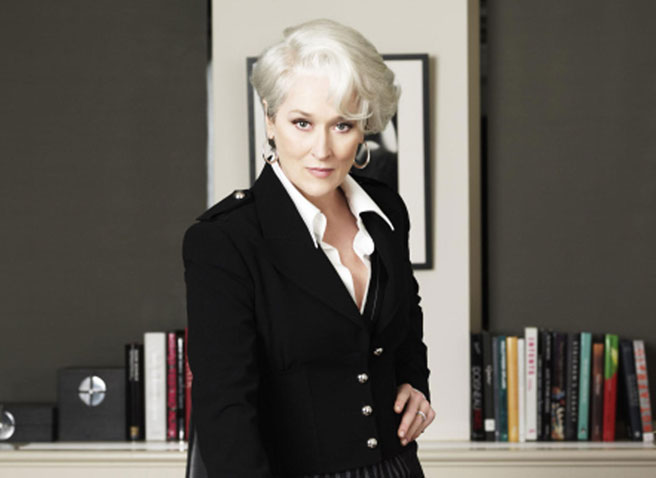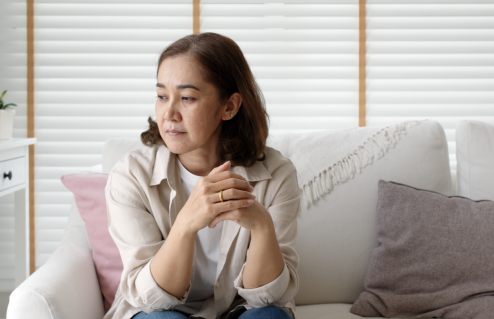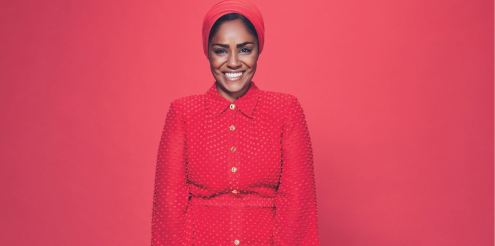Adult bullying on the rise
Adult bullying is on the rise — and it’s other women we need to watch, says Laura Bond

George and Jerry, in one famous Seinfeld episode, recall their tyrannical gym teacher who used to give boys ‘wedgies’ and encourage them to beat each other up. ‘Girls don’t do anything like that, do they?’ Jerry asks Elaine. ‘Oh no,’ Elaine replies. ‘We just tease each other until one of us develops an eating disorder.’
The sadistic, passive-aggressive female bully is celebrated in popular culture. We revelled in Meryl Streep’s ruthlessness in The Devil Wears Prada (pictured), and shows such as The Apprentice and Big Brother rely on pitting feisty females against one another to guarantee ratings success. But we are less happy to admit to the existence of female bullying in our own lives. We might be unwilling to blow the whistle on the female boss who subtly but relentlessly undermines our work, and we may ignore the daily snide remarks doled out by a colleague, for fear of becoming her next target.
But our dirty secret is very much a reality. A recent UK study of more than 5,000 workers revealed that at least 45 per cent of bullies are women. And who are their victims? According to research, women attack other women 71 per cent of the time. ‘I think women now have more opportunities to bully one another,' says Cheryl Dellasega, author of 'Girl Wars: 12 Strategies That Will End Female Bullying'. 'There are far more arenas for women to be openly competitive, but I don’t think that we’ve learned to do it very well.’
Underhand behaviour
Instead of owning up to our desire to dominate in a meeting, or boasting about sales figures to our colleagues in the same competitive spirit as men, we prefer to release our feelings of envy and jealousy in more underhand ways. So what exactly is female bullying? It’s often referred to as relational aggression — the word ‘relation’ being central to the shadowy nature of the problem. ‘There are no closer relationships than between two women,’ says Dellasega. ‘We nurture, we care and we can read body language better than men — but all of that can be used against someone when we’re feeling insecure.’ Founder of the Workplace Bullying Institute, Dr Gary Namie, agrees: ‘The basis for the initial relationship is also the tool women use to destroy that relationship.’
Campaign of malevolence
Namie became interested in female bullying after seeing his wife suffer at the hands of a ‘Machiavellian' colleague. ‘This woman feigned fondness for my wife — she courted her, she took her to lunch, but this turned out to be nothing more than intelligence gathering, to use against my wife later on,’ he says.
The adjectives psychologists often use to describe female bullying are ‘covert’, ‘subtle’ and ‘manipulative’. It might be spreading a rumour, questioning someone’s competence or ignoring a victim’s contribution.
But, according to Namie, we should not confuse bullying with a random act of malevolence. ‘It’s really a full-blown, laser-focused campaign of systematic, interpersonal destruction.’ Evie, a 29-year-old events manager, is given her daily dose of venom with a smile and a clever rhetorical question. ‘My colleague will wait until the boss is in the room and then say something like, “Do you really think you’re experienced enough for this client?”. She constantly undermines me and it’s knocking my confidence.’
But the devil doesn’t just wear Prada — she can lord over the school committee, turn your neighbourhood into Wisteria Lane or even put you off the gym. Along with clinical depression, anger and debilitating anxiety, a recent study showed that 30 per cent of women experience post-traumatic stress disorder from bullying. ‘When someone has been a victim of bullying, they become “hollowed out”. They lose everything: their self-respect, their confidence and their appetite,’ says organisational psychologist Mary Sherry. She has spent the past 15 years working with businesses to overcome bullying and, in her experience, female managers are more likely to bully staff than male ones. The victims of adult bullying are often popular and talented. ‘Our studies reveal that targets are often independent, skilled and well-liked,’ says Namie.
Being famous and beautiful certainly doesn’t give you immunity. Model Sophie Anderton has talked about being bullied, while actress Sienna Miller has spoken about the ‘vitriol’ she has experienced from the media and from some friends. ‘It’s women who are holding us back — there’s no sisterhood,’ she said in an interview.
Many of us have witnessed bullying, but don’t know how to react, though it leaves us deeply uncomfortable. A UK survey on bullying revealed that 11 per cent of bystanders experience trauma vicariously. ‘If you witness someone being attacked, it sickens you,’ says Namie. ‘But then you’re further sickened by knowing you did nothing. The way you resolve that dissonance is to say to yourself, “It mustn’t have been so bad”.’ Namie believes workers need to take responsibility when they see poisonous behaviour around them.
New environment
It’s not surprising that we’ve all witnessed a female bully at work — there are few senior positions for women in the workplace, meaning it’s likely some of us will resort to drastic measures to secure them. ‘For hundreds of years, men have competed with each other in the workplace,’ says Dellasega. ‘But women haven’t experienced being in these environments for very long.’
Much of the progress made in feminism comes from confronting uncomfortable realities and gaining relief merely by acknowledging these. Just a few decades ago we looked the other way when it came to domestic violence and, until very recently, schoolyard bullying was seen as a rite of passage. How long will it take for us to stop seeing eye-rolling and exclusion as OK?








